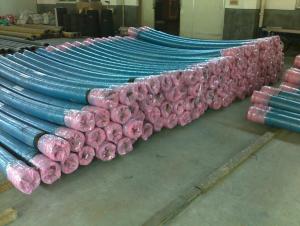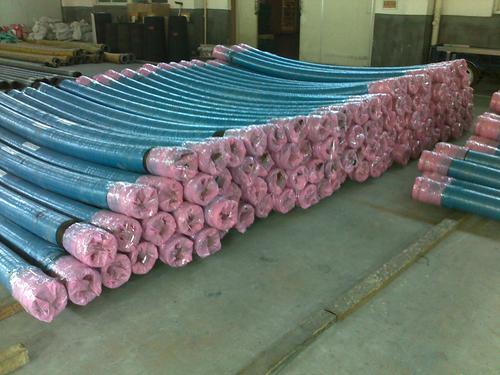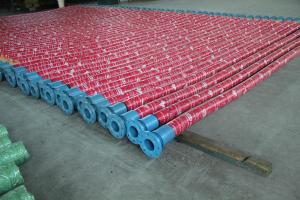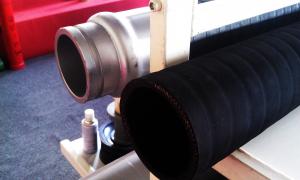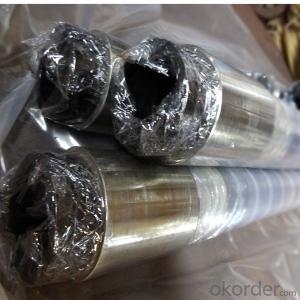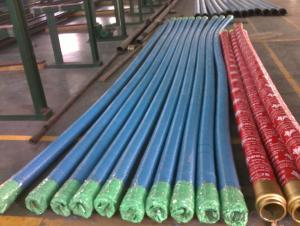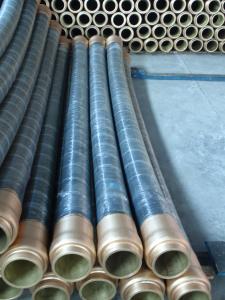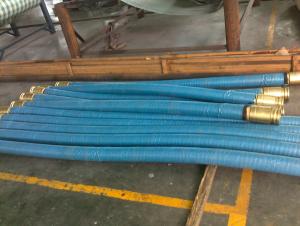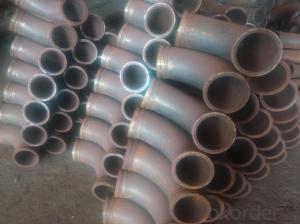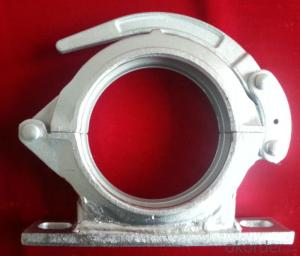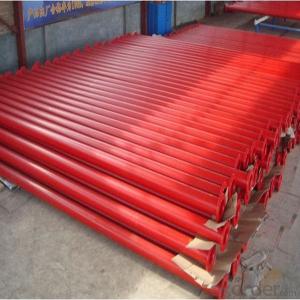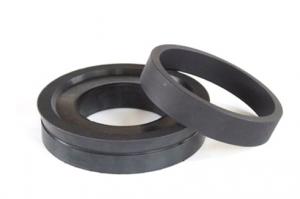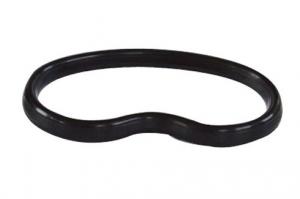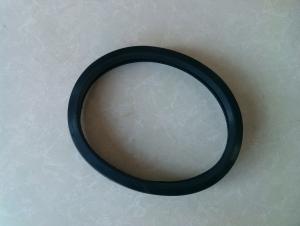Concrete Pump Rubber End Hose DN150
- Loading Port:
- China Main Port
- Payment Terms:
- TT OR LC
- Min Order Qty:
- -
- Supply Capability:
- -
OKorder Service Pledge
OKorder Financial Service
You Might Also Like
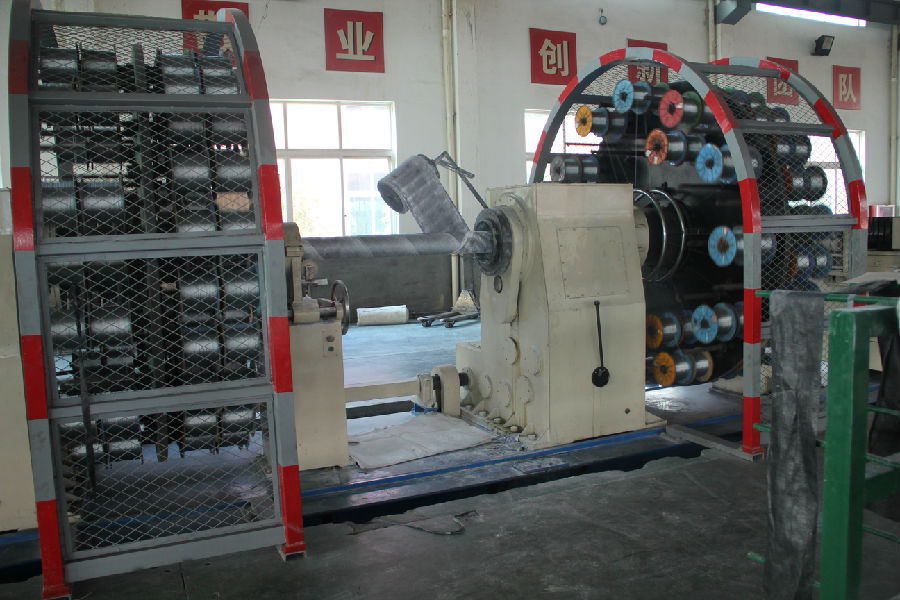
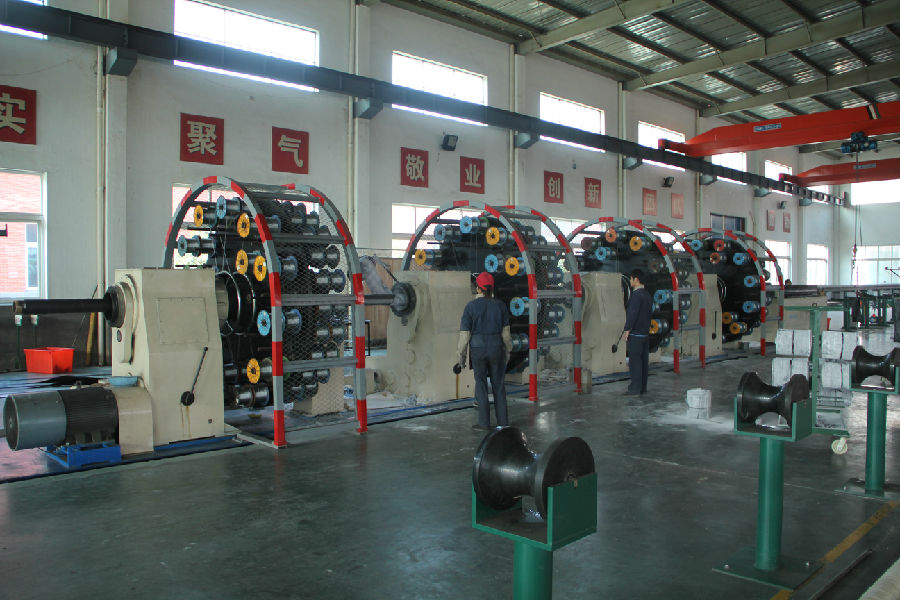
Specifications
Dn150 concrete pump rubber hose
1.Size:6 inch
2.Steel hose
3.2 or 4 piles of steel wires for your choose.
DN150 CONCRETE PUMP RUBBER HOSE
1.Work Pressure:85~1250(BAR/PSI)
2.Burst Pressure:200 to 2940(BAR/PSI)
3.Working life:20000m³
4.The inside of hose is high abrasion resistant.
5.Integrated hose end and inner wall harden,prolong work life.
Relevant Information:
Name | Concrete rubber hose; Delivery hose; End hose; Concrete pump hose; Boom hose |
Size | 2"/2.5"/3"/3.5"/4"/4.5"/5"/6"or according to client’s requirement |
Length | 3M,5 or Any length |
Reinforcement | Steel wire, tire cord or fabric |
Hose End | Galvanized, inner wall harden |
Application | Schwing, Putzmeister, Sany, Zoomlion, etc |
- Q: How can a faulty filter affect the pumping process?
- A faulty filter can impede the pumping process by allowing debris, contaminants, or particles to pass through and clog or damage the pump components. This can result in reduced efficiency, increased wear and tear, decreased flow rates, and potential pump failure.
- Q: What are the most commonly replaced spare parts for concrete pumps?
- The most commonly replaced spare parts for concrete pumps typically include wear plates, wear rings, and delivery cylinders. These components are subject to constant abrasion and wear due to the nature of their operation, which involves the movement of concrete at high pressures and velocities. Wear plates are usually made of hardened steel and are installed in the hopper and other high-wear areas to protect against the abrasive action of concrete. Wear rings, which are typically made of polyurethane or other durable materials, are used to reduce friction between the piston and cylinder, minimizing wear and maintaining optimal performance. Delivery cylinders, also known as pumping cylinders, are responsible for transferring the concrete from the hopper to the discharge outlet. Over time, the interior surface of the cylinder can become worn or damaged, necessitating replacement to ensure efficient concrete flow. Other commonly replaced spare parts for concrete pumps may include pistons, seals, hydraulic hoses, and couplings, as they are also subject to wear and tear during the pumping process. Regular inspection and maintenance of these components are essential to prevent unexpected equipment downtime and to ensure the long-term reliability and performance of concrete pumps.
- Q: Are there any specific guidelines for the installation of hopper components or agitators in concrete pump spare parts?
- Yes, there are specific guidelines for the installation of hopper components or agitators in concrete pump spare parts. These guidelines typically include instructions on proper alignment, securing of bolts, lubrication, and ensuring all components are properly connected. It is important to follow these guidelines to ensure safe and efficient operation of the concrete pump.
- Q: What are the signs of a clogged or damaged hydraulic filter?
- A clogged or damaged hydraulic filter may be indicated by several signs. One of the most common signs is a decrease in hydraulic system performance. If you observe a decrease in the speed or power of your hydraulic equipment, it may be due to a clogged filter that restricts the flow of hydraulic fluid. Another sign is an increase in heat within the hydraulic system. As the system struggles to maintain proper fluid flow and pressure, a clogged or damaged filter can cause it to overheat. Furthermore, unusual noises may be noticed coming from the hydraulic system. A clogged filter can result in air becoming trapped in the system, leading to strange noises like whining or grinding. Moreover, the presence of dirty or discolored hydraulic fluid could suggest a clogged or damaged filter. The filter's purpose is to remove dirt and contaminants from the fluid, so if it fails to do so effectively, the fluid will become dirty and discolored. Finally, frequent or recurring issues with the hydraulic system could be an indication of a clogged or damaged filter. The filter plays a critical role in maintaining the overall health of the hydraulic system, so if it is not functioning properly, it can lead to other problems such as pump failure or valve blockages. Regular inspection and replacement of hydraulic filters are crucial to ensure the proper functioning and longevity of your hydraulic system.
- Q: How often should a hopper filter be cleaned or replaced?
- A hopper filter should ideally be cleaned or replaced every 3 to 6 months, depending on the usage and the level of contamination.
- Q: Is the main pump of the concrete pump electric control or hydraulic control?
- Closed main oil pump behind the charge pump to provide a constant pressure to the displacement of the electromagnet by the current control output pressure to achieve the main pump pressure and pumping the commutation.
- Q: How long do concrete pump rubber hoses typically last?
- The lifespan of concrete pump rubber hoses can vary depending on a few factors. On average, concrete pump rubber hoses typically last between 5 to 10 years. However, this estimate can be influenced by factors such as the quality of the hose, the frequency and intensity of use, the type of concrete being pumped, and the maintenance and care provided to the hose. Regular inspection and maintenance are crucial to extending the lifespan of concrete pump rubber hoses. This includes checking for signs of wear and tear, such as cracks, abrasions, or bulges, and promptly addressing any issues. Proper storage and handling are also important to prevent unnecessary damage. Avoiding excessive bending, kinking, or dragging the hose can greatly extend its lifespan. It is worth noting that certain conditions, such as exposure to extreme temperatures, abrasive materials, or chemicals, can accelerate wear and shorten the lifespan of the hose. Therefore, it is essential to consider these factors when determining the expected longevity of a concrete pump rubber hose. Ultimately, while concrete pump rubber hoses generally have a lifespan of 5 to 10 years, the durability and longevity can be influenced by several factors. Proper maintenance, care, and consideration of the operating conditions can significantly extend the life of the hose and ensure its safe and efficient use.
- Q: How often should concrete pump control levers be inspected and replaced?
- Concrete pump control levers should be inspected regularly to ensure they are in proper working condition. The frequency of inspections and replacements will depend on several factors such as the amount of usage, environmental conditions, and the quality of maintenance performed on the equipment. As a general guideline, control levers should be inspected at least once a year. This inspection should include a thorough examination of the lever mechanism, checking for any signs of wear, damage, or malfunction. Additionally, it is recommended to inspect the levers after any major repair or maintenance work to ensure they have been properly reinstalled and are functioning correctly. If any issues are found during the inspection, it is crucial to address them promptly. Depending on the severity of the problem, repairs or replacements may be necessary. Minor repairs can often be done on-site, while more significant issues may require the assistance of a professional technician. It is important to note that regular maintenance, including lubrication and cleaning, can help extend the lifespan of the control levers. Following the manufacturer's guidelines for maintenance and usage can also help prevent premature wear and damage. Ultimately, the frequency of inspections and replacements may vary depending on the specific circumstances. It is always best to consult the equipment's manual or manufacturer for specific recommendations regarding the control levers' maintenance and replacement.
- Q: In general, how much concrete will be transported per hour for the concrete pump and the pump?
- The length of day pump 36-62m, the efficiency has little effect, regular work is generally 30-40 cubic / hour
- Q: What is the role of a concrete pump hopper agitator shaft?
- The role of a concrete pump hopper agitator shaft is to ensure the consistent and uniform mixing of concrete within the hopper. It rotates to prevent the concrete from settling or becoming compacted, ensuring a smooth and continuous flow of concrete through the pump, ultimately improving the efficiency and effectiveness of the pumping process.
Send your message to us
Concrete Pump Rubber End Hose DN150
- Loading Port:
- China Main Port
- Payment Terms:
- TT OR LC
- Min Order Qty:
- -
- Supply Capability:
- -
OKorder Service Pledge
OKorder Financial Service
Similar products
Hot products
Hot Searches
Related keywords
